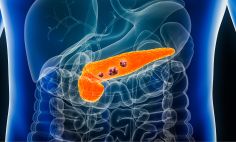Health Topics

The long haul: When COVID-19 symptoms don’t go away
*This article is an update to the original article, published on July 6, 2021. It was updated in July 2022 to reflect new information.
While most people who get COVID-19 bounce back after a few weeks, some struggle with symptoms and health problems like brain fog, fatigue, headaches, dizziness, and trouble breathing, even months after the initial infection is over.
Doctors and scientists are working to understand these mysterious symptoms, sometimes called “long COVID.” Who gets them? Why? How long do they usually last? To help answer these questions and more NIH is funding research on the long-term health effects of COVID-19, including long COVID and other post-COVID conditions.
What is long COVID?
The term “long COVID” is commonly used to describe a collection of symptoms and health problems that some people who had COVID-19 experience after the initial infection is over.
There are a few different terms to describe long-term health effects of COVID-19. Long COVID is one, but you may also hear terms like “post-COVID syndrome,” “post-COVID conditions,” “chronic COVID,” or “post-acute sequelae of SARS-CoV-2 (PASC).” People with long COVID are sometimes called “long-haulers.”
What are the symptoms?
Long COVID affects different people in different ways. While some people with long COVID notice strange symptoms when they first start recovering from COVID-19, others don’t notice anything is wrong until well after the infection has cleared.
People have reported a wide range of symptoms that impact their ability to move and think, as well as their mood. The symptoms often get worse after doing mental or physical work, sometimes called post-exertional malaise. Some of these symptoms can include:
- General symptoms such as:
- Fever
- Fatigue
- Joint or muscle pain
- Breathing and heart-related symptoms such as:
- Trouble breathing
- Cough
- Chest pain
- Pounding heart
- Neurological symptoms (related to the brain and nervous system) such as:
- Difficulty thinking or concentrating (sometimes called brain fog)
- Headaches
- Sleep problems
- Anxiety and depression
- Dizziness or lightheadedness upon standing up
- Digestive symptoms such as:
- Stomach pain
- Diarrhea
Symptoms can last for weeks or even months after COVID infection. They can range from relatively mild to severe, and they can change, disappear, and reappear over time.
What causes long COVID?
It’s not clear what specific biological process causes long COVID, but researchers have uncovered a few clues that could shed light on this mysterious condition.
One clue is the way that different people’s immune systems respond to COVID-19 infection. Research shows that people with the most severe COVID-19 symptoms and people with long COVID are more likely to have higher levels of harmful antibodies called “autoantibodies.” Autoantibodies are proteins in the immune system that that attack and damage healthy tissue, and they are involved in many autoimmune diseases.
There may be multiple causes of long COVID, which could help explain the wide range of symptoms. Some of the current theories are:
- Autoimmune response. A healthy immune system helps protect us by fighting a virus or infection. Sometimes it mistakenly attacks healthy cells, tissues, and organs. This is called an “autoimmune response,” and it’s what happens in autoimmune diseases like lupus, multiple sclerosis, and rheumatoid arthritis. The COVID-19 virus may stress the immune system so much that it triggers an extreme autoimmune response that continues after the patient has recovered from the initial infection.
- Persistent virus. The virus could hide and continue to multiply in the body for months or even years. This means it doesn’t immediately cause symptoms and isn’t necessarily infectious, but it could cause symptoms down the road.
- Dormant virus. Long COVID could be symptoms of a completely different dormant (or inactive) virus like the Epstein-Barr virus, the virus which causes mononucleosis, or “mono.” This theory proposes that COVID-19 infection could reactivate―or wake up―the dormant virus.
- Organ damage. COVID-19 may cause long-term damage to the body’s organs or blood vessels, which may cause long COVID symptoms.
Who can get it?
Current estimates on how common long COVID is among people who have had COVID-19 vary widely. Researchers are working to better understand who is most likely to experience long-term complications from COVID-19, but research on who gets long COVID is also mixed and complex. People who had severe cases of COVID-19 seem more likely to get long COVID―especially if they were hospitalized or admitted to an intensive care unit. But some people with long COVID didn’t have any symptoms from COVID-19 or only had mild or moderate symptoms.
Other groups who may be at greater risk include women, African Americans, people who had certain health issues before getting COVID-19, and people who did not get a COVID-19 vaccine.
How is it diagnosed and treated?
There isn’t a specific test for diagnosing long COVID. If you are experiencing long COVID symptoms, you should talk to your doctor. If you know you’ve had COVID-19 in the past, you and your doctor can work together to rule out other possible causes for your symptoms.
Until we know more about the biological processes behind long COVID, treatment for people with long COVID focuses on managing individual symptoms.
How is it being studied?
In December 2020, Congress approved $1.15 billion in funding over four years for NIH research into long COVID and other long-term health effects of COVID-19.
In February 2021, NIH launched a new program to identify the risk factors and causes of long COVID and to help understand how it can be prevented or treated.
Want to get involved?
There are lots of ways you can contribute to long COVID research. You can:
- Connect with the RECOVER Initiative. The NIH RECOVER Initiative brings together research teams, people with long COVID, caregivers, clinicians, and community leaders. They are working on multiple studies at different sites across the nation to better understand, prevent, and treat long COVID and other post-COVID-19 conditions in adults and children. Find a RECOVER study site and join a study.
- Learn about patient-led research. The Patient-led Research Collaborative is a group of citizen scientists and researchers, many of whom also have long COVID. This group is conducting research to define and better understand the long-term effects of COVID-19, with a strong focus on the patient experience.
- Join a clinical trial. Go to ClinicalTrials.gov to find out about long COVID studies happening around the world and sign up to participate.
- Join a study at the NIH Clinical Center. Learn about how to get involved in COVID-19 studies happening at NIH.







